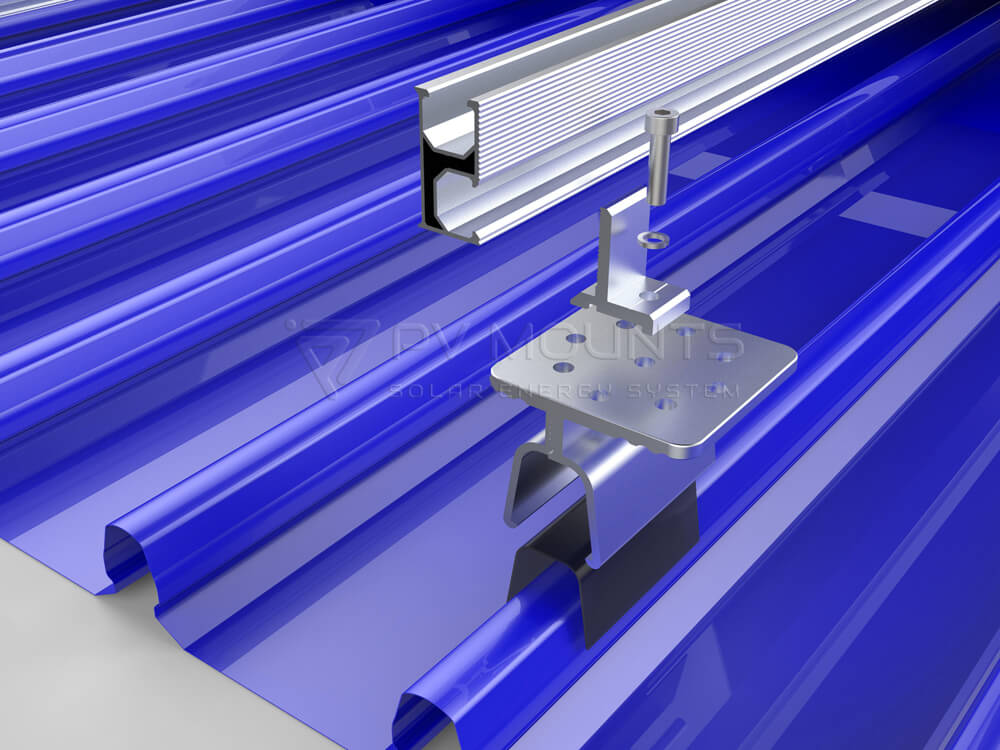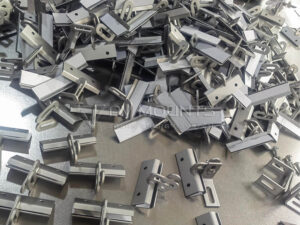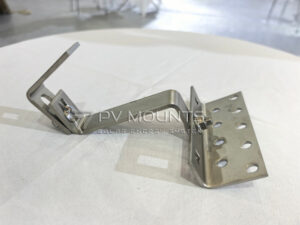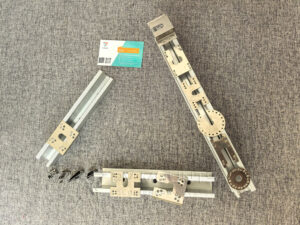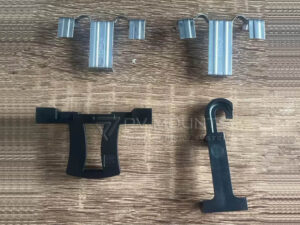In the realm of construction and, specifically, roofing, the choice of materials for essential components like standing seam clamps is pivotal. These clamps play a crucial role in securing the metal panels to the roof without penetrating the panel itself, which is why the material choice directly impacts the installation’s efficacy, durability, and overall sustainability. This article delves deep into the various materials utilized in the manufacturing of standing seam clamps, highlighting their pros and cons, environmental impacts, and long-term benefits. By understanding these factors, professionals in the industry—from architects to builders—can make more informed decisions that lead to safer, more cost-effective, and more durable constructions.
Types of Materials Used
Metals Commonly Employed
Metals are the backbone of standing seam clamp manufacturing due to their robustness and longevity. Aluminum, known for its lightweight and resistance to corrosion, is a favored choice among manufacturers for regions with salty air or heavy rainfall. Stainless steel is another common option due to its immense strength and minimal maintenance needs, making it ideal for commercial buildings where long-term durability is crucial. Both materials are not only effective in fulfilling their functional requirements but also offer a sleek aesthetic finish that does not compromise the architectural design.
Non-metal Alternatives
With technological advancements, the use of non-metal alternatives such as high-grade polymers and composites is on the rise. These materials bring several benefits, including increased flexibility and resistance to environmental stressors, which can sometimes surpass those of traditional metals. For example, certain thermoplastic compounds can be engineered to have superior UV resistance and thermal expansion coefficients tailored to specific climates. This section will explore these innovative materials, discussing their compatibility with different roofing systems and their role in promoting sustainable manufacturing practices.
Factors Influencing Material Choice
Durability and Strength
The primary criterion for selecting a material for standing seam clamps is its durability and strength. Materials must withstand physical stresses and strain over prolonged periods without deforming or failing. This is crucial not only for the longevity of the roof but also for the safety of the structure beneath it. Factors like tensile strength, hardness, and fatigue resistance are discussed, with comparisons drawn between common materials to illustrate which are best suited for heavy-duty applications versus those better for lighter, less demanding installations.
Weather Resistance
Materials for standing seam clamps must endure a variety of weather conditions—extreme heat, cold, and moisture. How different materials react to these environmental factors. For instance, while metals like copper are highly durable and can develop a protective patina, they may not be suitable for areas with high-temperature fluctuations that could lead to expansion and contraction, causing structural fatigue.
Cost-Effectiveness
The economic aspect of material choice is a critical consideration. This part of the article evaluates the cost-effectiveness of different materials, taking into account not only the initial expenses but also the long-term savings accrued from reduced maintenance and longer replacement cycles. By examining the total cost of ownership, which includes installation costs as well as lifecycle maintenance, the section provides a comprehensive view of the financial implications of each material choice.
The detailed discussion of these factors serves to educate the reader on the complexities involved in material selection for standing seam clamps, highlighting how each decision can significantly affect the overall outcome of roofing projects.
Impact of Material on Performance
Longevity and Maintenance
The material choice directly influences the longevity of standing seam clamps. Materials that are resilient and can withstand environmental pressures without degrading are preferred for their ability to extend the life of the roof system. For example, galvanized steel, while initially more cost-effective, may require more frequent replacements in highly corrosive environments compared to aluminum or stainless steel.
Installation Compatibility
The compatibility of standing seam clamps with various roofing materials and profiles is crucial for ensuring a secure and effective installation. Materials must not only be physically compatible with the roofing panels but also easy to handle and install. For instance, lighter materials like aluminum are easier to handle and can be more quickly installed compared to heavier materials like steel, reducing labor costs and time on site.
Technological Advancements
Innovations in Material Engineering
The continuous evolution in material science has led to the development of newer, more advanced materials for standing seam clamps. Innovations such as nano-coatings and enhanced metallurgical compositions are improving the performance of traditional materials by increasing their durability and environmental resistance. Specific advancements like the integration of smart materials that can adapt to environmental changes, offering dynamic performance improvements that were previously unachievable.
Future Trends in Materials
Looking forward, the material science field is set to offer even more possibilities for the manufacturing of standing seam clamps. The emergence of lightweight composite materials and the increasing use of recycled materials are trends that promise to make clamp manufacturing more sustainable and efficient. Potential future materials and technologies could revolutionize the industry, such as biodegradable composites and the use of graphene-infused polymers for enhanced strength and thermal stability.
Environmental Considerations
Sustainability in Material Selection
Selecting environmentally sustainable materials is becoming increasingly important in the construction industry. Materials such as recycled aluminum or steel not only help reduce the environmental impact of manufacturing processes but also contribute to building practices that are more sustainable overall. The use of such materials reduces waste and energy consumption, aligning with global efforts to minimize carbon footprints.
Recyclability and Eco-friendliness
The end-of-life recyclability of materials used in standing seam clamps is crucial for minimizing environmental impact. Materials like aluminum and steel are highly recyclable and can be repurposed at the end of their life cycle without significant degradation in quality. The importance of selecting materials that offer eco-friendly disposal options, promoting a circular economy where materials are reused and recycled, thereby reducing landfill waste and encouraging sustainable development in the construction industry.
A comprehensive look at how material choices affect not only the technical performance and economic feasibility of standing seam clamps but also their environmental impact, illustrating the interconnectedness of these factors in the decision-making process.
Industry Standards and Regulations
Compliance with Global Standards
The manufacturing of standing seam clamps is subject to a variety of industry standards that ensure products are safe and reliable. These standards, such as those set by ASTM International or the International Building Code (IBC), CE, dictate specific requirements regarding material properties, manufacturing processes, and performance benchmarks. How compliance with these standards is crucial for manufacturers, as it not only helps in maintaining quality across products but also ensures legal compliance across different markets.
Safety and Quality Assurance
Safety is paramount in the construction industry, and the material choice for standing seam clamps plays a critical role in ensuring the overall safety of roofing installations. The quality assurance processes that are essential for verifying the safety and reliability of materials used in clamp production. It covers topics such as stress testing, corrosion resistance testing, and load capacity checks, which are necessary to meet both industry standards and consumer expectations.
Conclusion
This comprehensive exploration of material choices in the manufacturing of standing seam clamps underscores their significant impact on the overall performance, durability, and sustainability of solar roofing mouting systems. The discussion has highlighted the importance of considering a range of factors—from environmental conditions and cost-effectiveness to industry standards and technological advancements—when selecting materials. By integrating insights from real-world case studies and expert opinions, this article aims to empower industry professionals with the knowledge to make informed, strategic decisions in their material selection processes. Ultimately, the goal is to enhance the quality and efficiency of roofing installations worldwide, promoting safer, more sustainable construction practices.


